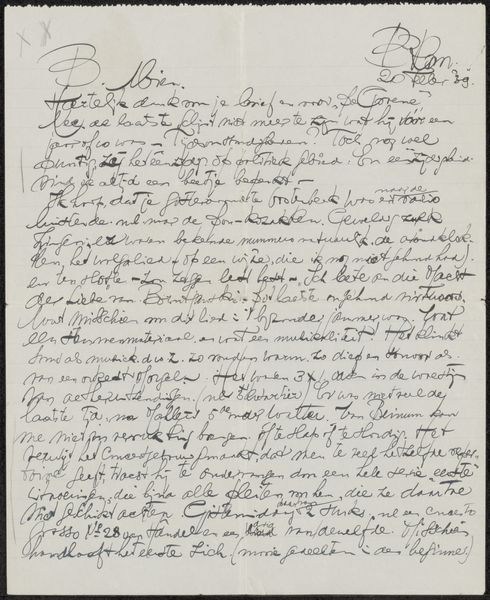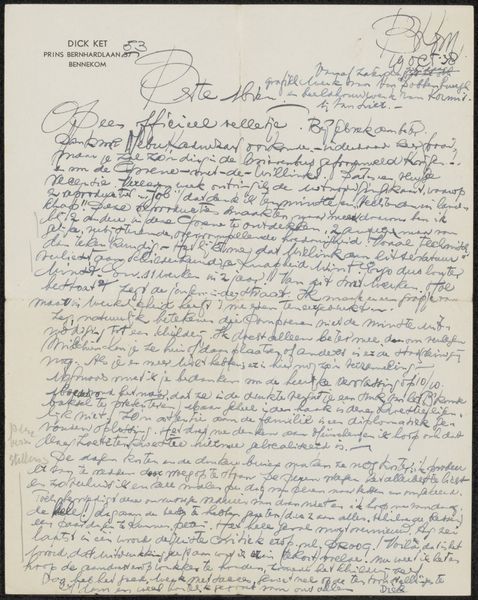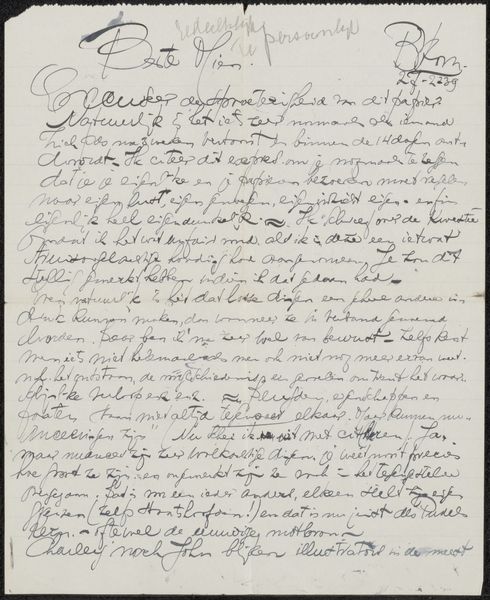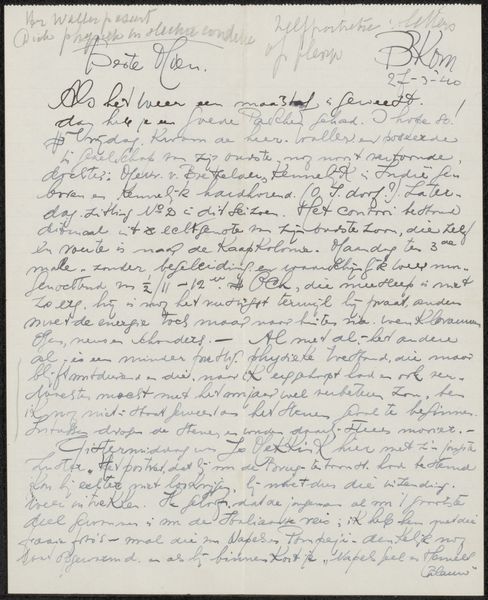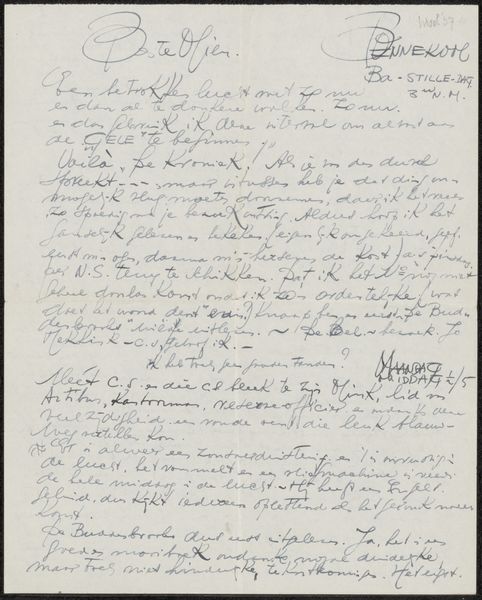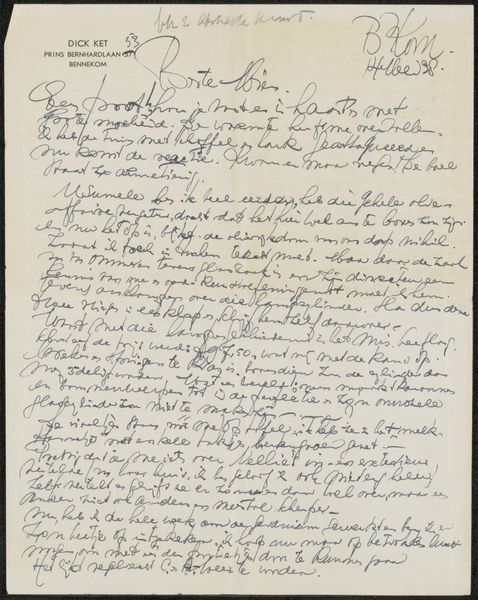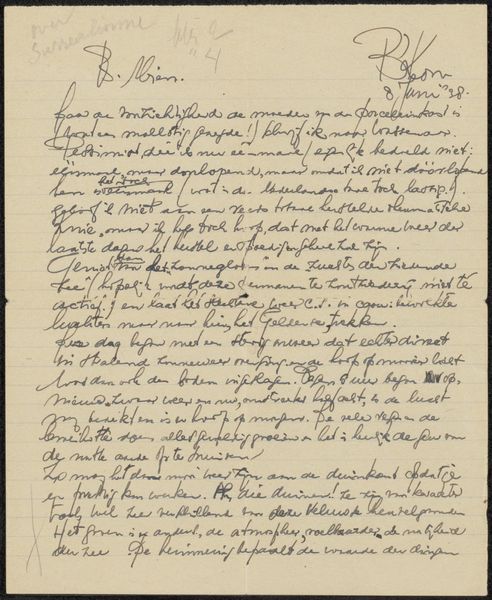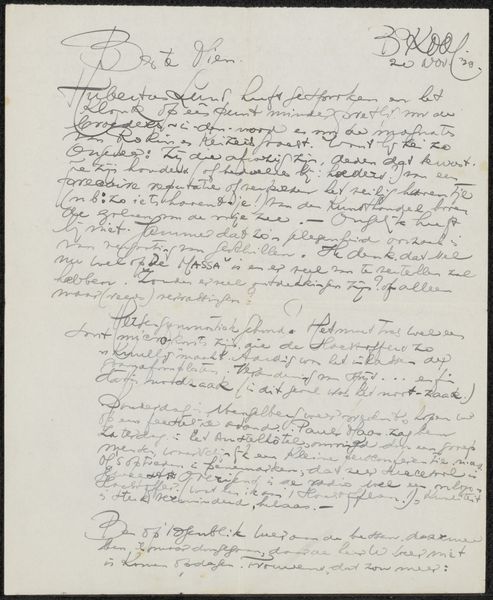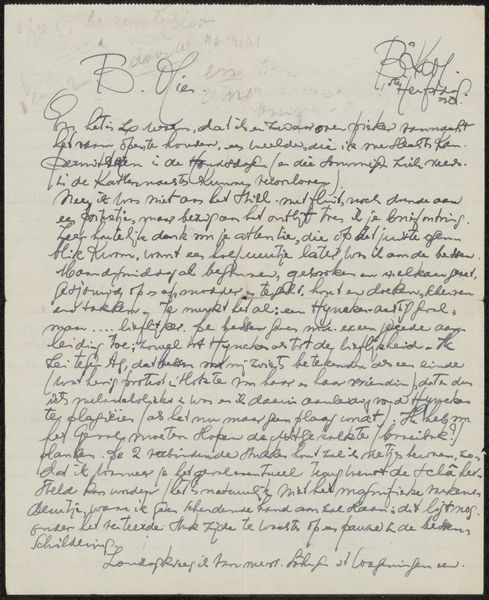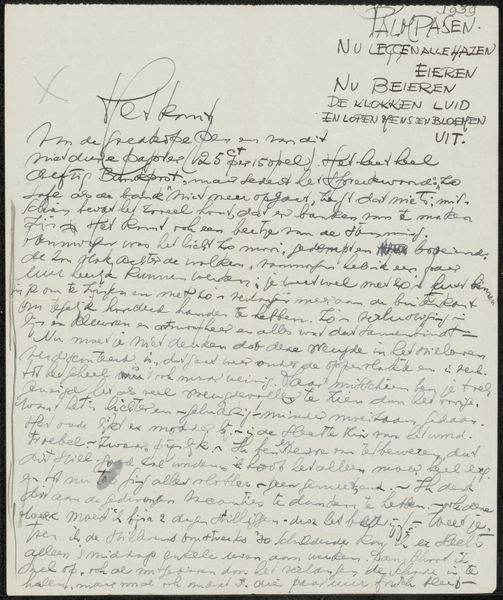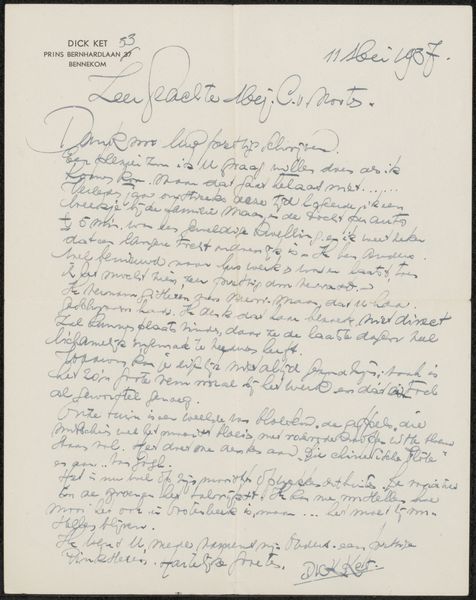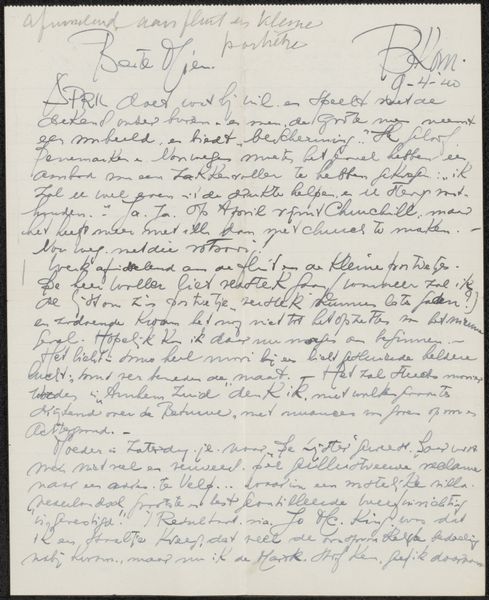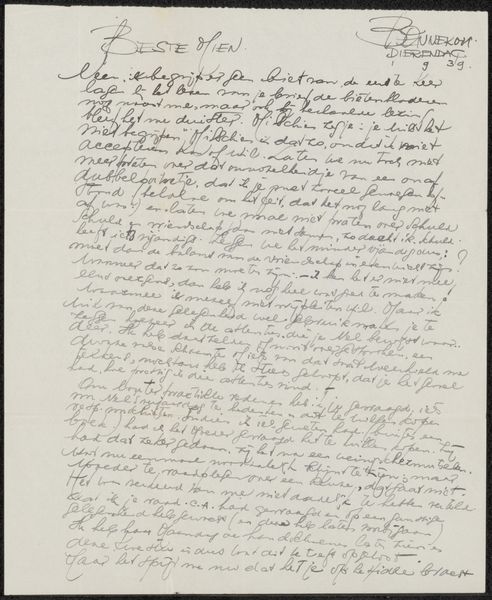
drawing, paper, ink
#
portrait
#
drawing
#
dutch-golden-age
#
paper
#
ink
#
calligraphy
Copyright: Rijks Museum: Open Domain
Curator: So, tell me about what we're looking at today... Editor: This is "Brief aan Mien Cambier van Nooten," which translates to "Letter to Mien Cambier van Nooten," possibly from 1938, by Dick Ket. It’s ink on paper and housed in the Rijksmuseum. My first impression is just how intimate it feels, peering into someone's personal correspondence. What catches your eye? Curator: Well, the intimacy certainly sings to me as well. Look how the ink bleeds slightly into the paper; it reminds me that we are observers, outsiders, perhaps even voyeurs. The calligraphy itself feels intensely personal, and yet… indecipherable, almost dreamlike. This invites so much interpretation! Are we reading a factual communication or are we witnessing a fragment of someone's subconscious laid bare? Editor: That’s a good point! I hadn't thought about it as something not necessarily meant for us. It feels so immediate. Curator: Exactly. And think about the historical context; the late 1930s… the shadow of war looming. Correspondence took on a deeper meaning; a fragile link between individuals. Perhaps this letter, regardless of its explicit content, was, at its core, a testament to connection, to shared humanity in uncertain times? Editor: It’s interesting to consider that even the act of writing the letter becomes part of the art itself, a performance almost. Curator: Precisely. It transcends the words, becoming an artifact imbued with emotion and history. A small window into a soul. Editor: I guess I came in with assumptions that because it's in a museum, it has a public intent, but now I'm appreciating that art can just be for ourselves, or at least, start there. Curator: And isn’t that where some of the most potent art originates? From the quiet corners of our inner worlds.
Comments
No comments
Be the first to comment and join the conversation on the ultimate creative platform.
